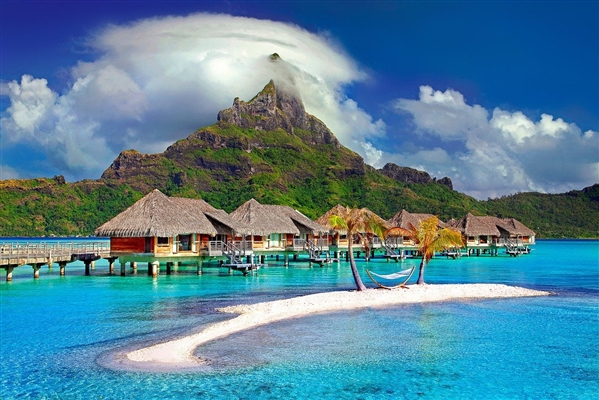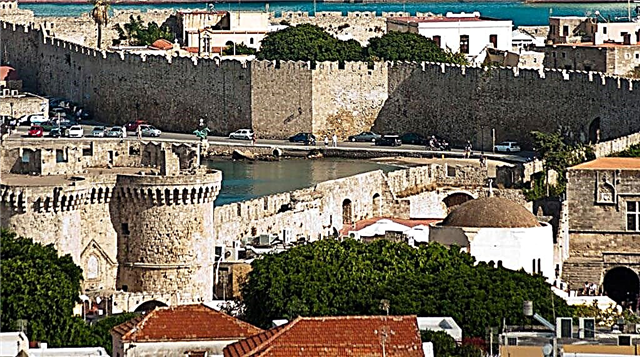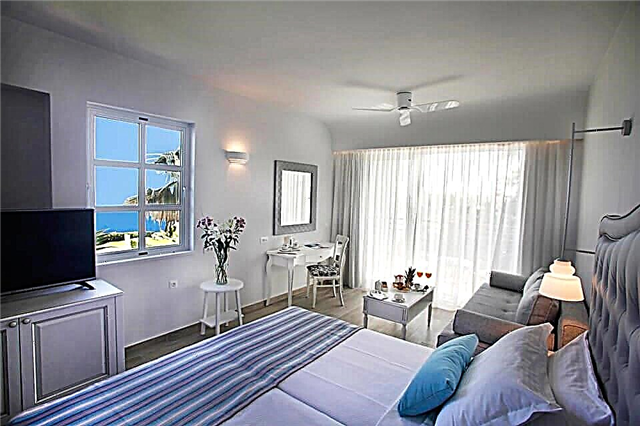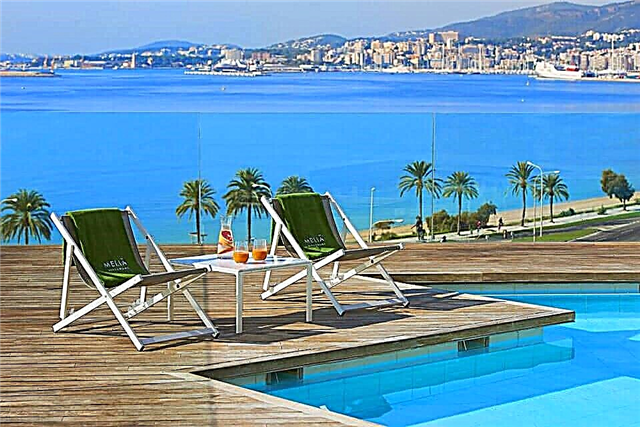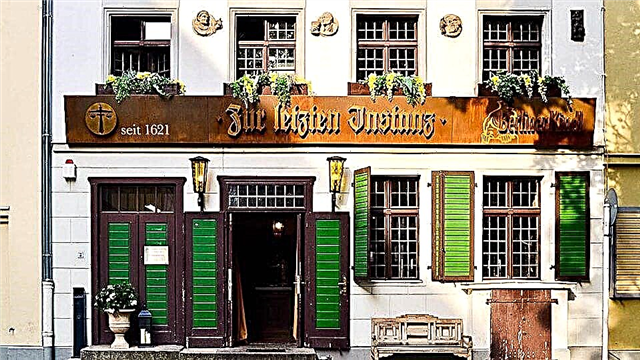Experienced tourists who come to Berlin not for the first time are already looking for an alternative to the "fresh" route. We decided to help you diversify your vacation and prepared an overview of interesting and atypical places in Berlin.
Guided tour with gritters
Many independent tourists today actively use the services of gritters, individual guides who are ready to take guests of their city along the most unusual routes. The Grieter movement today covers more than 20 countries and 70 cities around the world. Berlin is among them. The topic of the trip will depend only on the desires and interests of tourists. Some are interested in military Berlin, others - the history of the Berlin Wall, the third - the history of festivals, etc.
Kurfürstendamm

A walk along the famous Berlin boulevard in the Charlottenburg district visually and mentally transports tourists to the pre-war period of the last century, when it was the focus of the emigre society. This was the time when Russian theaters, literary publishing houses and private clubs were opened in Berlin.
On the boulevard, German speech was practically inaudible, and the Berliners themselves called this place "Nep Prospect". Mensheviks and anarchists, eminent writers and famous bankers flooded the area at the beginning of the last century. There are many houses with name plaques. They testify to the presence of Marina Tsvetaeva, Vladimir Nabokov and Andrei Bely in them, to the places where Mayakovsky's shocking readings took place.
Prenzlauer Berg

Prenzlauer Berg is today part of Berlin's largest Pankow district. Before the unification of Berlin, it was an independent administrative unit of the city, and after the collapse of the Berlin Wall, it became a hangout for creative bohemians. In this area, musicians, actors of all stripes gathered and exhibition grounds were organized for artists, eminent and beginners. These quarters suffered little from the military bombing and many houses survived, leaving Berlin as a legacy of buildings from different eras. Gothic, intertwined with modern and neoclassicism, will impress everyone.
From Kollwitzplatz to the Jewish Cemetery

You can start the walk from Kollwitzplatz (Kollwitzplatz) with a bronze monument to the pacifist artist Keta Kollwitz and move towards the Jewish cemetery with the grave of the impressionist artist Max Liebermann. On the way along the route, you will be surprised by the oldest building on which you can read the inscription “death to capitalism”. This is a trace of a period in the history of the capital, when many empty houses were taken over by radical youth and turned into "free communes".
Mauerpark park

The famous public park Mauerpark is saturated with the air of underground and freedom. It shocks the receptive tourist with the number of multicolored freaks, hippies and punks, street mimes and musicians. And the cult establishments of the 90s, which have retained their names since the shocking 90s ("Kruger", "August Fengler" and "Club de Republics"), still gather crowds of visitors in the evenings.
Unformatted Berlin - Friedrichshain district

It is no secret that every city has unannounced places in its arsenal, which the main stream of tourists will bypass. If there is an interest in such walks, then a win-win option is the Friedrichshain area (Friedrichshain). Many would like to visit Woodstock in a European way, but, naturally, young people prefer to live in this place. And they come here from all over the world: they rent apartments first for a short time, then they come again, and some stay here forever.
Informal residents of certain quarters of Friedrichshain allow themselves to live according to special rules, or rather, without them. They arrange for themselves and their friendly neighbors "days of disobedience" under the motto: "If it is not forbidden, then it is possible." They create dance floors and bars from rubbish, old furniture and metal waste, paint the walls of buildings and garages with graffiti. Therefore, the magic of attraction of onlookers to this quarter is very great. The Friedrichshain district is known for the largest open-air graffiti gallery - the 1.5 km part of the Berlin Wall left after the unification. It is painted with graffiti masterpieces that can be viewed for hours.
But the original "face" of Friedrichshain can be seen only in the evening. By this time, local informals gather for parties, and live music sounds in the clubs. Trezor, Astra, Lido, Magnet, Fritzklub are the most famous hangout places in Friedrichshain.
We recommend: Author's excursions in Berlin with Russian guides - an overview of the most interesting.
Kreuzberg district

I must say that in Berlin, graffiti is a common phenomenon and is found in almost all parts of the city. But the Kreuzberg district is a conglomerate of contradictions, flamboyance, whims, oppositions and multiculturalism. The place where the Berlin "rebels", fighters against rising prices, gather will be indicative. Their camp is set up at the foot of old buildings (5 floors high), on which the already well-known graffiti "The Golden Chains of Capitalism" and "East - West" are adorned. The Spree embankment attracted radical youth with abandoned factories and empty houses, which they themselves took over and turned into unlicensed clubs and spontaneous galleries.
The manifestation of freedom near the ruins of the wall at one time attracted the attention of David Bowie, Helmut Newton and Nick Cave. Berlin consolidated the image of the cult capital of electronic music back in the 90s. And today the townspeople take the organization of nightlife very seriously.
Flea markets

A Sunday walk through flea markets is an opportunity to look deep into city life, to find out how Berliners live. The intimate world, revealed in the curious things for sale, reflects not only the interests and passions of the townspeople, but also the pages of the history of Berlin. Here they are called Flohmarkt, and are mainly concentrated in the three central regions - Prenzlauer Berg, Friedrichshain and Kreuzberg. The main, or even the most impressive, can be called Mauerpark. In addition to the special atmosphere of the avant-garde, expressed in freedom of action, a variety of street food, impromptu concerts, there is a market in this place that undoubtedly surprises with a variety of surprises for sale.

It seems to have everything from home furnishings to historical artifacts. Moving from merchant to merchant, from tent to tent, sorting through second-hand finds and vintage clothes, small interior joys of the past century and ceramics, hardly anyone can spend less than half a day here. If the purpose of the walk is a few "flea beetles", then you need to look at your watch more often.

There is another market nearby - Arkonaplatz. For the sake of an excursion, you don't have to stay here for a long time, since mostly locals trade here. They do not like to bargain, and the assortment is made up of old unnecessary things: dishes, household appliances, posters and pictures, jewelry. It is impossible to plan a route through Berlin's flea markets without going through the Friedrichshain area.
Near the Warschauerstraße metro station, the former warehouses, where alternative clubs and cafes thrive today, attract more than just young people. There are several small markets in the streets between them, where you can find unique household items, avant-garde clothing and bold jewelry. When going for interesting purchases, you need to remember that in addition to comfortable shoes, you will need cash, since in such places, including cafes and bars, it is impossible to pay with a bank card.
Berlin's famous beer halls with a century of history
Beers in the Schöneberg district
Connoisseurs of beer entertainment, even those who have seen Oktoberfest in Munich, can now travel to Berlin's beer establishments, which are in no way inferior to the Bavarian ones.Moreover, there are bars here that have kept their traditions for over a century. Most of the old pubs are concentrated in the Schöneberg area, and you can get around them quite quickly, having tasted a mug in each. Here, at the same table, you can sit with native Berliners, regulars of these bars, taste not only beer, but also fruit liqueurs with a 100-year-old recipe.
Zur Letzten Instanz

Zur Letzten Instanz occupies a special place among the "beer business cards" of Berlin. A brasserie with a long history is located near Alexanderplatz on a small street Weisenstrasse. This restaurant was opened in 1621, and it received its current name "At the Last Resort" at the beginning of the last century. There are two versions of the appearance of such an unusual name among Berliners.
One of them says that the peasants who disagreed with the court decisions (court hearings were held a stone's throw from the pub) found a compromise here over a glass of beer. Another version is the neighborhood with an old Berlin cemetery.
The walls of this institution keep the memory of many celebrities who sat here with a glass of beer: Napoleon, Charlie Chaplin and Wilhelm Raabe. Shots from the film novel about a Soviet intelligence officer, where Stirlitz and Pastor Schlag are having dinner at Zum groben Gottlieb, were filmed in this restaurant. Only the name was changed. In the film, he was referred to as "At the rude Gottlieb."
Today it retains the atmosphere typical of 18th century German beer houses. The interior is unusual. It is a rustic inn with dark walls and dim lights, divided into two rooms. The historical entourage is also complemented by the names of dishes with legal terminology: "Speech of the Prosecutor", "Claim for Defamation", "Testimony", "Breakfast of a Lawyer". Despite the sufficient roominess (the restaurant can receive up to 180 visitors) and democratic prices, it is difficult to get here. Therefore, when planning lunch or dinner at a table in Zur Letzten Instanz, you need to book your seats in advance.

Themed walks in Berlin not only allow you to expand your knowledge of famous sights, but also give you the opportunity to feel the rhythm of life of the city dwellers and feel the spirit of the city from the inside. You can merge with the crowd and even imagine yourself for a while as a real Berliner, a resident of the modern capital of the united Germany.


